NATURAL WORLD
Brilliant bees that waggle with intent
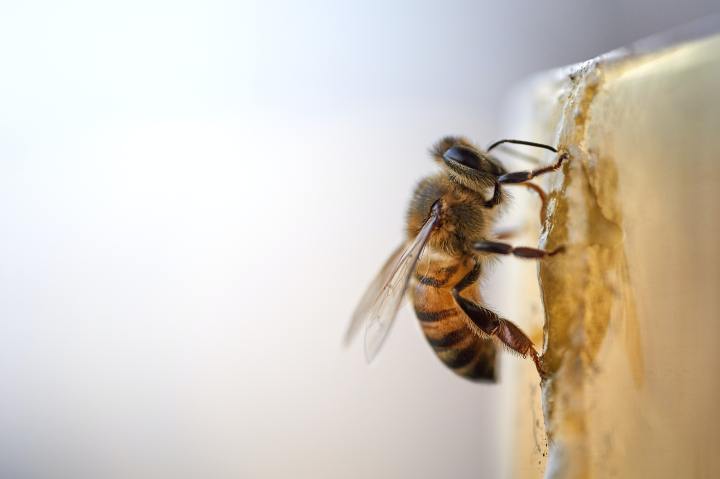
It’s now common knowledge that bees communicate by dancing. But the extent of their intelligence deserves a hard look at just how smart insects are.
Bees pose a problem. Not because they sting – all creatures have the right to defend themselves – but because they do spherical geometry.
This may be hard to believe, mainly because the arrogance of our species inclines us to think that those creatures most like us – vertebrates – top the intelligence list. Insect intelligence is apparently unsettling, even for scientists. In really scary science fiction movies, the horrors always seem to be scheming creatures with exoskeletons – or no skeletons at all.
Fortunately, an Austrian biologist, Karl von Frisch, was too focused on his work to worry about who he unsettled. While World War 1 loomed in Europe, Von Frisch was at the University of Munich studying the colour adaptation of fishes. When war was declared he retreated to his country home in Brunnwinkl.

A bee sitting on a yellow flower. Image: Supplied.
Strolling in spring fields, he got to wondering if bees could see colour. The more he watched the little insects the more they charmed him, so he set up some hives.
“How do they know where the best flowers are?” he wondered. With a glass-fronted hive, Von Frisch noticed that returning bees generated excitement among their neighbours on the comb.
“It appears,” he wrote, “that in some way or another the first-comer must not only have announced her rich find to the other bees in the hive, but must also have led some of them to it so they might exploit it for themselves. What we should like to know is how they do it.”
By marking certain bees with a spot of colour he could keep his eye on them in the melee of creatures on a comb. What he saw excited him. They danced. Not randomly but in very specific patterns. What did the patterns mean?
He put out feeding trays, marked some bees that arrived at them, then watched them when they returned to the hive. Not long afterwards the feeding tray would be buzzing with bees. Some communication was clearly taking place.
A scout bee encountering a tray near the hive would return and do a circular dance, closely trailed by other bees with their feelers on her abdomen. After a few rounds, these other bees would fly off, scout round, and find the tray. If the tray was beyond a certain distance, however, the scout bee would change her dance (worker bees are all female – the drones just drone about). She would circle first left then right, doing a little straight run in the middle while waggling her tail.
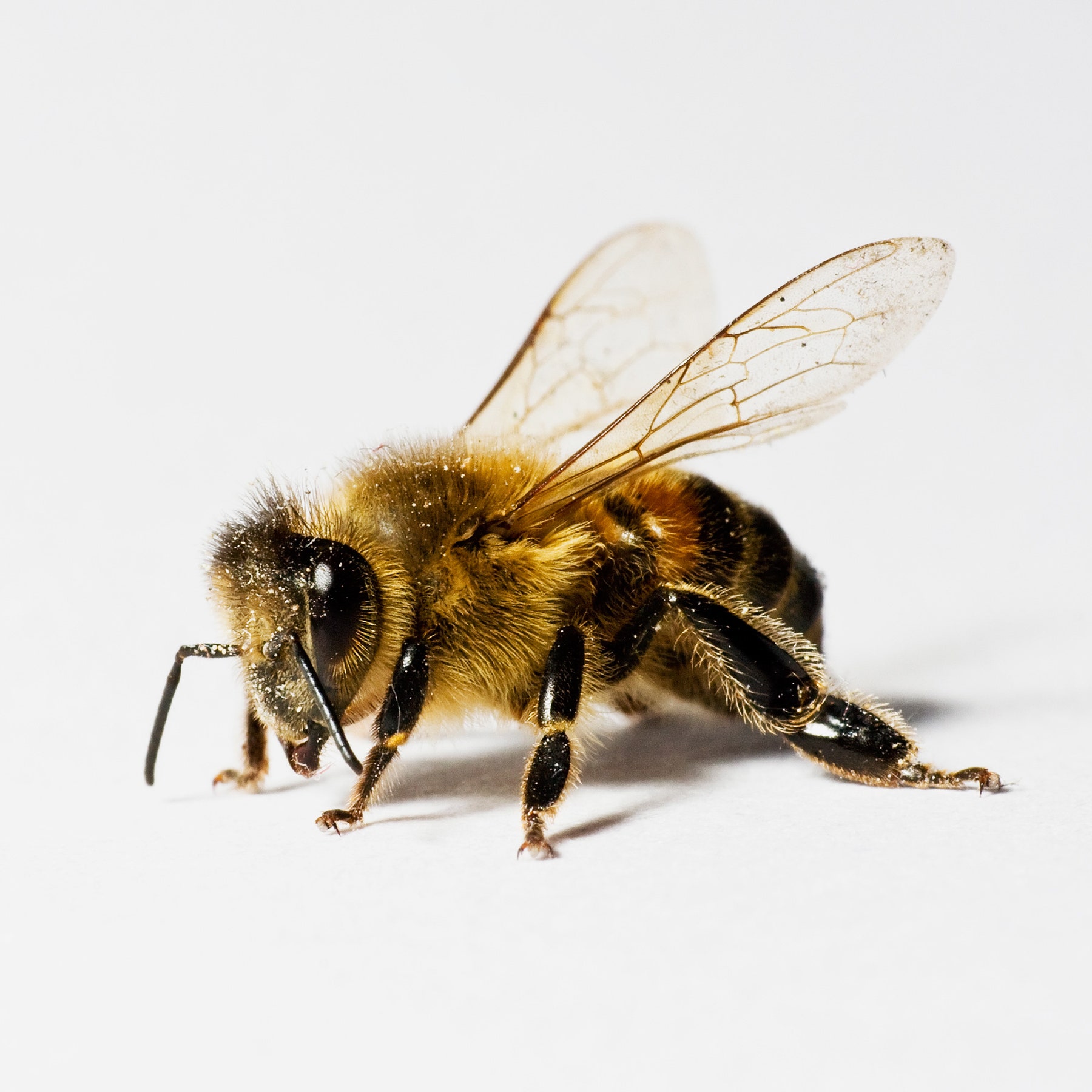
Bee specimen. Image: Supplied
Other bees would watch and follow, occasionally making little “weeping” noises, whereupon the dancing scout would stop and share her food with them. Then they would fly off in the direction of the “straight” run of her dance to exactly the tray the scout had come from. Von Frisch was astounded.
How did the scouts indicate direction and distance? Herein lay the biologist’s genius.
He timed the rotation of the scouts and the number of tail waggles. The slower they rotated and the fewer times they waggled, the further was the tray from the hive. Eventually, Von Frisch could predict exactly where the bees would go by counting and timing. He had learnt bee language.
His next conclusion was to give rise to massive controversy in the scientific world for several decades. The Earth is, of course, horizontal to a bee, but the combs upon which they dance are vertical and, generally, in pitch darkness.
Scout bees, he said, transpose the solar angle into a gravitational angle. Up represents the sun, and the angle of the straight part of the waggle dance to the vertical is the angle between the sun and the food source. If they dance facing down, the worker bees “read” that as meaning “fly with the sun at your back, but angle from it according to my waggle line”.
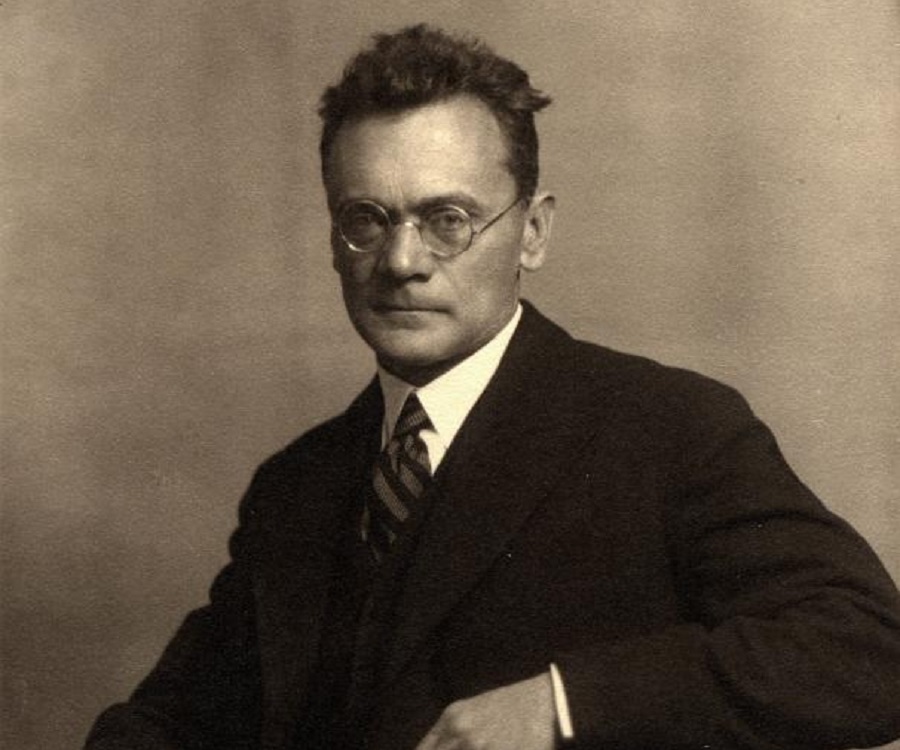
Karl Von Frisch. Image: Supplied
In 1927, he published his findings in a book, The Dancing Bees. “So little is known about the mental capacity of the honey bee,” he concluded, “it is better not to say too much about it. But without doubt they can learn. And what they learn they remember – for many weeks, perhaps for the rest of their lives.”
The book caused a storm. Many scientists at the time believed Von Frisch was suffering from delusions. One university refused to publish the book, others refused to use it in the teaching of etymology.
In the US, two eminent biologists set up elaborate experiments attempting to disprove the dancing bee theory. They failed: Von Frisch was right.
He would later win a Nobel Prize for his work.
***
Building on Von Frisch’s legacy, researchers continued to discover abilities in bees that astounded them.
Writing in the journal Scientific American, biologists James and Carol Gould, looking back at the debate, concluded that “the assumption that insects were, by virtue of their size or their lack of an internal skeleton, necessarily simple had frequently beguiled researchers into overly reductionist hypotheses.”
Institutes for research into honey bees were set up in several countries and facts from open-minded observers mounted fast.
Bee ancestry dates back at least 40 million years and they have been socially organised into swarms for about 30 million of those. So they’ve had time to practise their communication techniques.
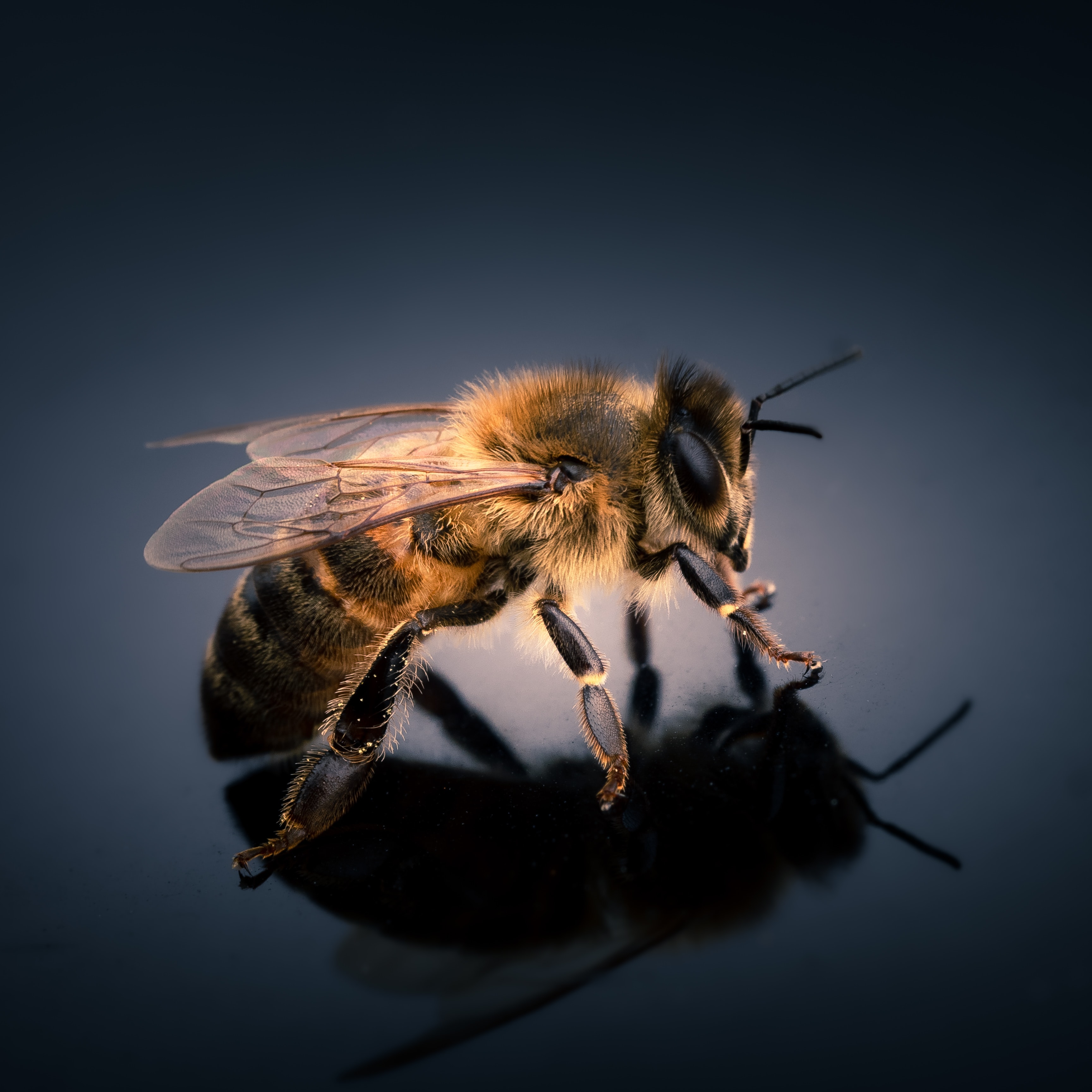
Image: Michael Milverton / Unsplash
A single honey bee, it was estimated, flies about 900km in her life. That’s equivalent to about 100,000 human kilometres or more than twice round the Earth.
They are born with magnetite (lodestone) in their lower abdomens and therefore are virtually flying compasses.
Although they were once thought to be deaf, highly directional ears have been discovered in their feelers. When a scout bee waggles it also emits low sounds rather like a small motorboat. It has been speculated that the frequency of these sounds communicates distance.
The most extraordinary findings, however, remain the sophistication of honey bee navigation. It is all very well to navigate by the sun but, as we all know, the sun moves. How does a bee take that into account when communicating direction? Even more puzzling is that, in terms of how a bee’s compound eyes work, it is unlikely that the bee can even see the sun.
Researchers found that bees use polarised light. In space, the sun’s light is not polarised. But on hitting Earth’s atmosphere rays are scattered and, by the time they hit the ground, the shorter ultraviolet rays have been forced into a single plane of vibration.
They are polarised, but in a certain way – perpendicular to the line linking that point to the sun. So the polarised light pattern in the sky will encircle the sun, like concentric fences – the further from the sun the more it will be polarised.
Bees see this ultraviolet light. They can look at any part of the sky, see the angle of polarisation, drop a line from that point to the horizon, estimate the sun’s azimuth and know exactly where they are. They can do this whether it’s cloudy or even after the sun has set. When humans do this it’s known as spherical geometry.
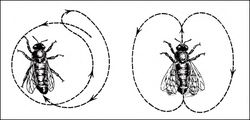
Waggle dance.. Image: Marcio Rocha
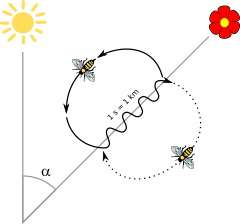
Waggle dance Image: Wikipedia
There are two other skills they need to get their geometry right: a good speedometer and an absolutely acute sense of time.
If this all sounds complicated, it is. Can bees do it? Evidently, and with an ease and accuracy that is astonishing. This information, plus the scents and tastes they gather, they communicate in their waggle dance and can direct sister bees accurately for up to 5km.
They’re even democratic. When they swarm, scouts will go ahead to check for suitable places to settle, returning to dance directions. After a number of bees visit the various suggested places, a “voting” process takes place until one site (generally the best) wins out by having more bees dance for it.
It appears that all species of honeybees speak some variant of the dance language, but with slightly different dialects.
So what is intelligence?
Intelligence is usually measured in terms of a creature’s ability to learn, anything else is instinct or luck. If all this navigation were hard-wired into a bee’s brain it would be startling enough. But bees have to learn.
About 20% of all young bees that leave the hive for the first time get lost. Elaborate experiments have shown that bees scout their terrain – a building, a tall tree, a pool of water – and memorise these positions in terms of their polarised sun grid, rather like a GPS logging position against satellites. Once they have done this they remember it and never get lost.
If they’re blown off course they just shoot the sun, check their GPS, set a new course and fly home. If you move the hives they build up a new map, which they do quite quickly.
Japanese researchers have found that bees use learnt knowledge to detect poorly visible or camouflaged objects, and that they’re pretty good at memorising mazes. They even have associative recall: a whiff of scent can trigger the recall of an associated colour.
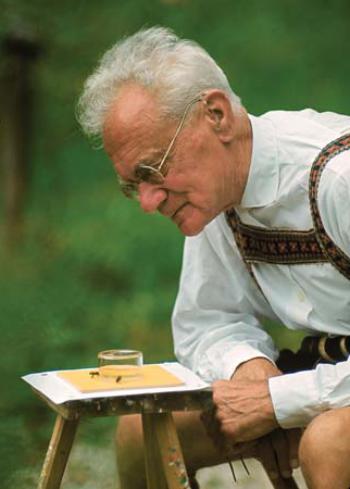
Karl Von Frisch. Image: Supplied
In 1965, Von Frisch took his findings through another quantum leap and raised another storm. In The Dance Language and Orientation of Bees he pointed out that bees use symbolic representation to communicate. Their dance shapes are graphic representations of their intentions, which are designed to communicate with others.
Though they only have a brain the size of a pinhead, they can create and understand abstract forms which have social meaning. The only other creatures on Earth able to do that, as far as we know, are ourselves.
This raises all sorts of thorny questions. Such as what is the relation between brain size and abstract thought? What is abstract thought? And if we put as much effort into studying other insects as we have into studying bees, would we find they’re far smarter than we imagined?
Until we find out, perhaps we should go easy on that bug spray. The beetle in the corner may be pondering particle physics. DM/ML
















 Become an Insider
Become an Insider
Thank you for this excellent & fascinating article Don. I’m currently involved in an initiative in East Africa which is entirely focused on Bee-keeping, honey production & wax as an alternative source of income for rural communities. Much of what you’ve written about here, especially in relation to their navigation skills, mirrors our experience on the ground.
This was the best break from my work in quite a while. Absolutely fascinating. Thanks, Don.
A really great article. My respect for the insect world has grown.
Wonderful piece. Thank you.
Brilliant article, it was captivating it really makes one appreciate what humans can and must learn from nature. We are too wrapped up in our own little world, whereas we could be unravelling so much more! Thank you.
Awe is what I feel. I wonder what goes on in a cockroach’s head? Humans really only study that which they can gain from? The more we study, the more amazing and complex the universe is…..
A lovely overview of the topic. Fascinating and thought provoking.
Absolutely brilliant article – much enjoyed. There really is more in heaven and earth than we dream of…